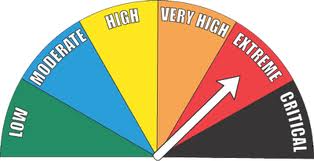What is a Red Flag Warning

A warning issued by National Weather Service fire weather forecasters to alert users to an ongoing or imminent critical fire weather pattern. Visit the Tucson Weather Web site for an up to date weather forecaste at: https://www.weather.gov/twc/.
The warning, from the National Weather Service in Tucson, alerts land management and fire districts to the potential for widespread new ignitions or control problems with existing fires, both of which could pose a threat to life and property. It is issued when it is an on-going event or the fire weather forecaster has a high degree of confidence that Red Flad criteria will occur within 48 hours of issuance. Red Flad criteria is based on local area vegetation characteristics, local climatology, select weather criteria and/or any combination of critical weather and fuel moisture forecasts. In some states, dry lightning and unstable air are criteria. A Fire Weather Watch may be issued prior to the Red Flag Warning.
Tubac Fire District will display a Red Flag on the flag pole to designate what the National Weather Service deems Red Flag Days~!
Ratings
The fire danger rating is an estimate of the potential risk for fires. It is calculated daily by measuring the humidity, wind speed, temperature and amount of precipitation.

Low
Fires can start in places such as campgrounds and spread slowly into forests and then die out in open areas. Fires have low flames and are close to the ground. These types of fires are usually easy to control. There is little likelihood of lightning-caused fires

Moderate
Fire spread is moderate in forests and fast in open areas. Fires burn on the surface with moderate flames approximately 1.2m to 2.5m (4 to 8 feet) high. Controlling them may be difficult, with light to moderate mop-up required.

High
Fire spread is fast in the forest, though not for sustained periods. Fires are hot surface fires with some individual trees being consumed. Control may be difficult and mop-up would require considerable effort.
